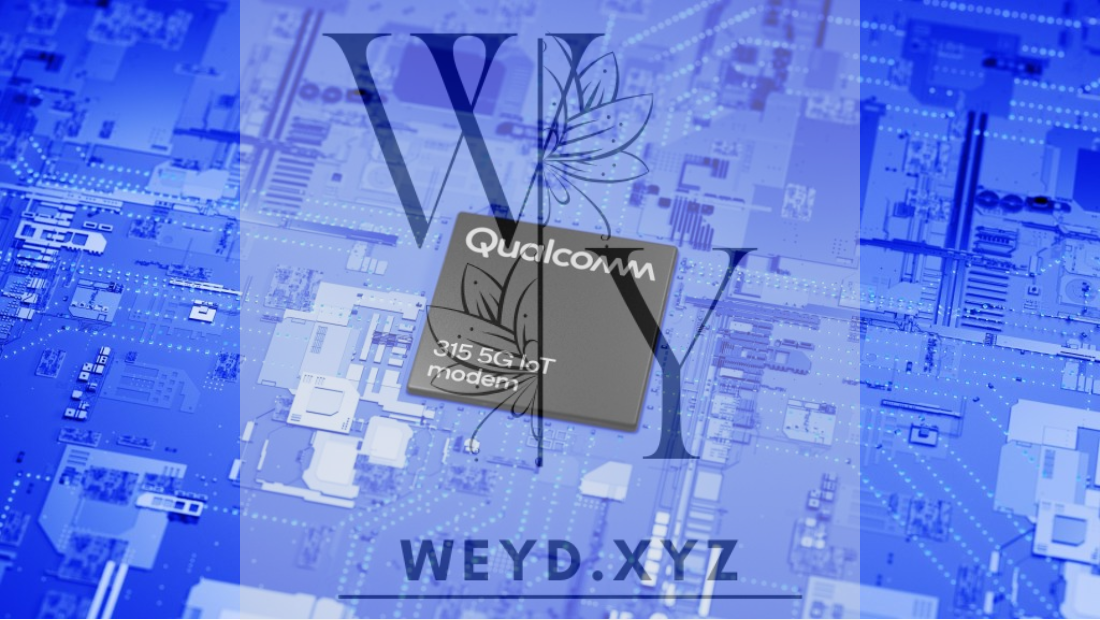Blog
The Impact of Qualcomm Connectivity Solutions on Modern Wireless and IoT Applications
In today’s hyper-connected world, seamless and reliable connectivity is at the heart of innovation, driving advancements across various industries, including Internet of Things (IoT), smart homes, wearables, automotive systems, and industrial automation. As the demand for faster, more reliable wireless communication continues to grow, Qualcomm, a global leader in wireless technology, has played a pivotal role in shaping the future of connectivity. With its cutting-edge connectivity solutions, Qualcomm has enabled transformative advancements that have become foundational for the development of modern wireless systems and IoT applications.
In this article, we will explore the impact of Qualcomm connectivity solutions on modern wireless technologies, examining their role in 5G, Wi-Fi 6, Bluetooth, and IoT, and how these innovations are powering the next generation of wireless devices, systems, and applications.
1. Qualcomm: A Leader in Wireless Technology
Qualcomm has long been recognized as a pioneer in wireless communication, known for developing technologies that shape the way we connect to the internet and communicate with devices. From mobile phones to IoT devices, Qualcomm chipsets are at the core of the most innovative wireless systems.
The company’s key contributions include advancements in cellular connectivity, Wi-Fi standards, Bluetooth technology, and advanced processing capabilities, all of which are critical to the functioning of modern IoT applications. Qualcomm’s solutions enable devices to be more connected, smarter, and energy-efficient, paving the way for industries to move towards more intelligent systems.
Some of Qualcomm’s most notable connectivity innovations include:
- Qualcomm Snapdragon chipsets for mobile and IoT devices.
- Qualcomm X-series modems for 5G and LTE connectivity.
- Wi-Fi 6 (802.11ax) technology.
- Bluetooth 5.0 and 5.1 technologies.
- Qualcomm AI capabilities to enhance connectivity features.
2. Qualcomm’s 5G Connectivity Solutions: The Game-Changer for IoT and Wireless Networks
One of the most revolutionary advancements in connectivity is the introduction of 5G wireless networks, and Qualcomm has been at the forefront of this transformation. 5G promises to deliver unprecedented speeds, low latency, and enhanced capacity, which will have profound implications for IoT applications and wireless communication.
A. High-Speed Connectivity and Low Latency
Qualcomm’s 5G modems and Snapdragon processors are designed to leverage the ultra-fast speeds of 5G networks. While 4G LTE was a significant leap forward in terms of mobile connectivity, 5G enables speeds that are up to 100 times faster than 4G. This breakthrough in speed is critical for applications that rely on real-time data processing, such as:
- Autonomous vehicles that require instant communication with other vehicles and infrastructure.
- Smart cities, where millions of devices need to transmit data in real time.
- Wearables that continuously monitor health metrics and require fast data transfer.
Additionally, low latency is one of the key features of 5G. Qualcomm’s 5G solutions reduce the time it takes for data to travel between devices, allowing for faster responses, which is essential for applications in areas like telemedicine, remote surgery, and industrial automation. For IoT devices that need to communicate with the cloud or other devices in real-time, 5G is the enabler that will ensure minimal delay, making it a game-changer for industries requiring instant data feedback.

B. Massive IoT Connectivity
5G also opens the door to massive IoT deployment, allowing millions of connected devices to operate simultaneously without overcrowding the network. Qualcomm’s 5G connectivity solutions ensure that these devices remain connected with high reliability, even in densely populated areas. This is essential for smart cities where sensors, vehicles, and devices must coexist and communicate efficiently in real-time.
Qualcomm’s commitment to 5G ensures that as IoT adoption grows, its chipsets and modems provide the necessary backbone for the next wave of intelligent connectivity.
3. Wi-Fi 6: Enhancing Connectivity for Dense Environments
As more devices become connected to the internet, especially in smart homes and enterprise networks, the demand for better Wi-Fi performance has grown exponentially. Wi-Fi 6 (also known as 802.11ax) addresses the challenges of high-density environments, offering faster speeds, increased capacity, and more reliable connections.
Qualcomm has played a significant role in advancing Wi-Fi 6 technology, providing solutions that improve connectivity for the growing number of devices in homes, businesses, and public spaces. Wi-Fi 6 supports higher throughput and more efficient data transmission, making it ideal for IoT systems that require fast and uninterrupted connections.
A. Improved Efficiency in Dense Device Environments
One of the standout features of Wi-Fi 6 is its ability to handle more devices on the same network without sacrificing performance. In a typical smart home or office, dozens, if not hundreds, of devices may be connected to the same Wi-Fi network—ranging from smart thermostats and security cameras to smart TVs and wireless speakers. Qualcomm’s Wi-Fi 6 solutions are optimized to handle the growing number of connected devices, reducing network congestion and ensuring that each device gets the bandwidth it needs.
B. Better Battery Life for IoT Devices
Wi-Fi 6 also incorporates a feature called Target Wake Time (TWT), which allows IoT devices to schedule when they wake up and transmit data. This results in significant power savings for devices like smart sensors, wearables, and health monitoring devices, making them more energy-efficient and prolonging their battery life. With Qualcomm’s Wi-Fi 6 solutions, IoT devices can remain connected to the network while consuming less power, which is crucial for battery-operated devices that need to run for extended periods without recharging.
4. Bluetooth 5.0 and 5.1: Improving Connectivity in Wearables and Low-Power IoT Devices
Bluetooth has long been a standard for short-range communication in wireless devices, and with the advent of Bluetooth 5.0 and 5.1, Qualcomm has taken it to the next level. These versions of Bluetooth offer increased range, faster speeds, and lower power consumption, all of which are key features for IoT applications.
A. Enhanced Range and Speed
Bluetooth 5.0 offers a four times greater range and twice the speed compared to previous versions of Bluetooth. This is especially useful for smart home devices and wearables, where devices need to communicate over longer distances without sacrificing connection quality. For example, Bluetooth 5.0 enables smart speakers, fitness trackers, and headphones to maintain a stable connection even when the user is far from the device.
B. Location Tracking with Bluetooth 5.1
Bluetooth 5.1 introduced features such as directional finding, which allows devices to determine their location with a high degree of accuracy. This technology enables location-based services in smart cities and asset tracking in industrial IoT environments. With Qualcomm’s Bluetooth 5.0 and 5.1 chipsets, businesses can enhance their IoT solutions with improved real-time tracking, navigation, and location-based automation.
5. The Role of Qualcomm in Enabling the Future of IoT
Qualcomm’s connectivity solutions serve as the backbone for some of the most transformative IoT applications in modern society. From smart homes and wearables to automotive and industrial automation, Qualcomm’s innovations in 5G, Wi-Fi 6, and Bluetooth are enabling the seamless operation of smart devices that are smarter, more efficient, and more connected than ever before.
A. Smart Cities and Infrastructure
In the context of smart cities, Qualcomm’s connectivity technologies allow cities to become more efficient, sustainable, and responsive. IoT devices embedded throughout cities—such as smart streetlights, environmental sensors, and traffic monitoring systems—rely on Qualcomm’s wireless solutions to gather and transmit real-time data. This data helps city planners make informed decisions about resource management, traffic flow, and public safety.
B. Healthcare and Wearables
In the healthcare sector, Qualcomm’s connectivity solutions have revolutionized telemedicine and remote patient monitoring. Wearables that track vital signs, such as heart rate, temperature, and glucose levels, rely on Qualcomm’s Bluetooth and Wi-Fi 6 solutions to transmit data securely and efficiently to medical professionals or cloud platforms for analysis. These advancements are helping to improve patient care and reduce healthcare costs by enabling more personalized and remote health management.
6. Conclusion
Qualcomm’s impact on modern wireless and IoT applications cannot be overstated. Through innovations in 5G, Wi-Fi 6, Bluetooth, and other wireless technologies, Qualcomm has enabled the creation of faster, more efficient, and reliable connected devices. Whether it’s powering the next generation of smart homes, wearable health monitors, autonomous vehicles, or industrial IoT systems, Qualcomm’s connectivity solutions are at the heart of this revolution.
As the world continues to embrace the Internet of Things and move toward a more connected future, Qualcomm’s technology will remain essential in delivering the high-speed, low-latency, and secure connectivity that these applications demand. With Qualcomm leading the way, the future of wireless communication and IoT is set to be even more transformative and impactful than ever before.


